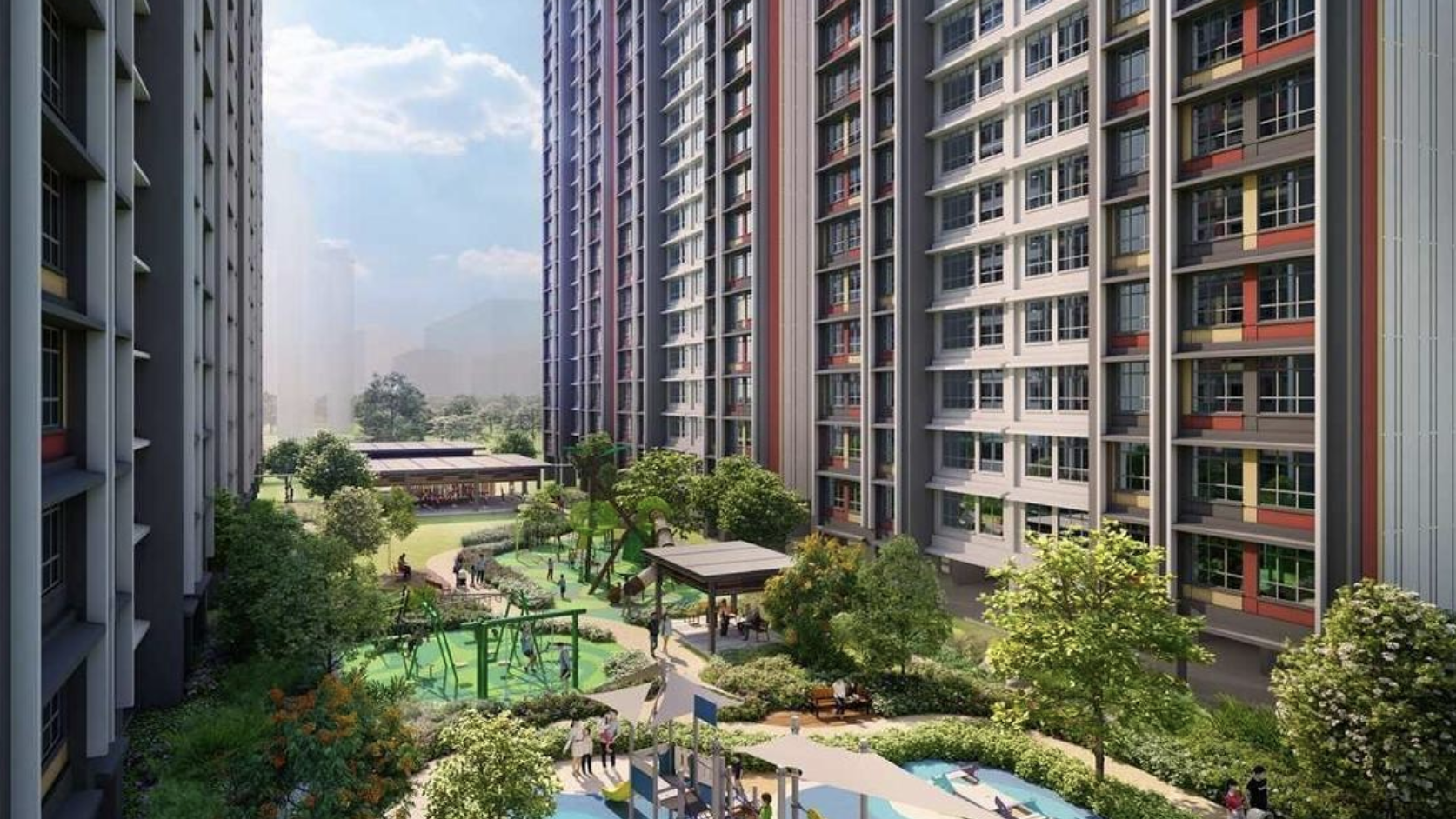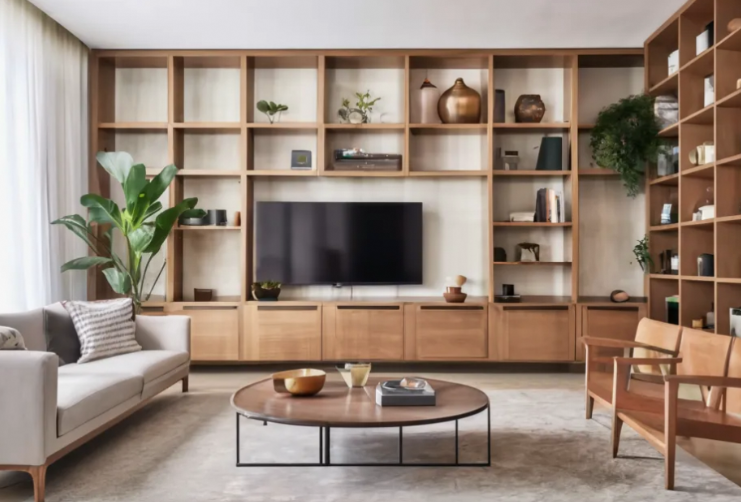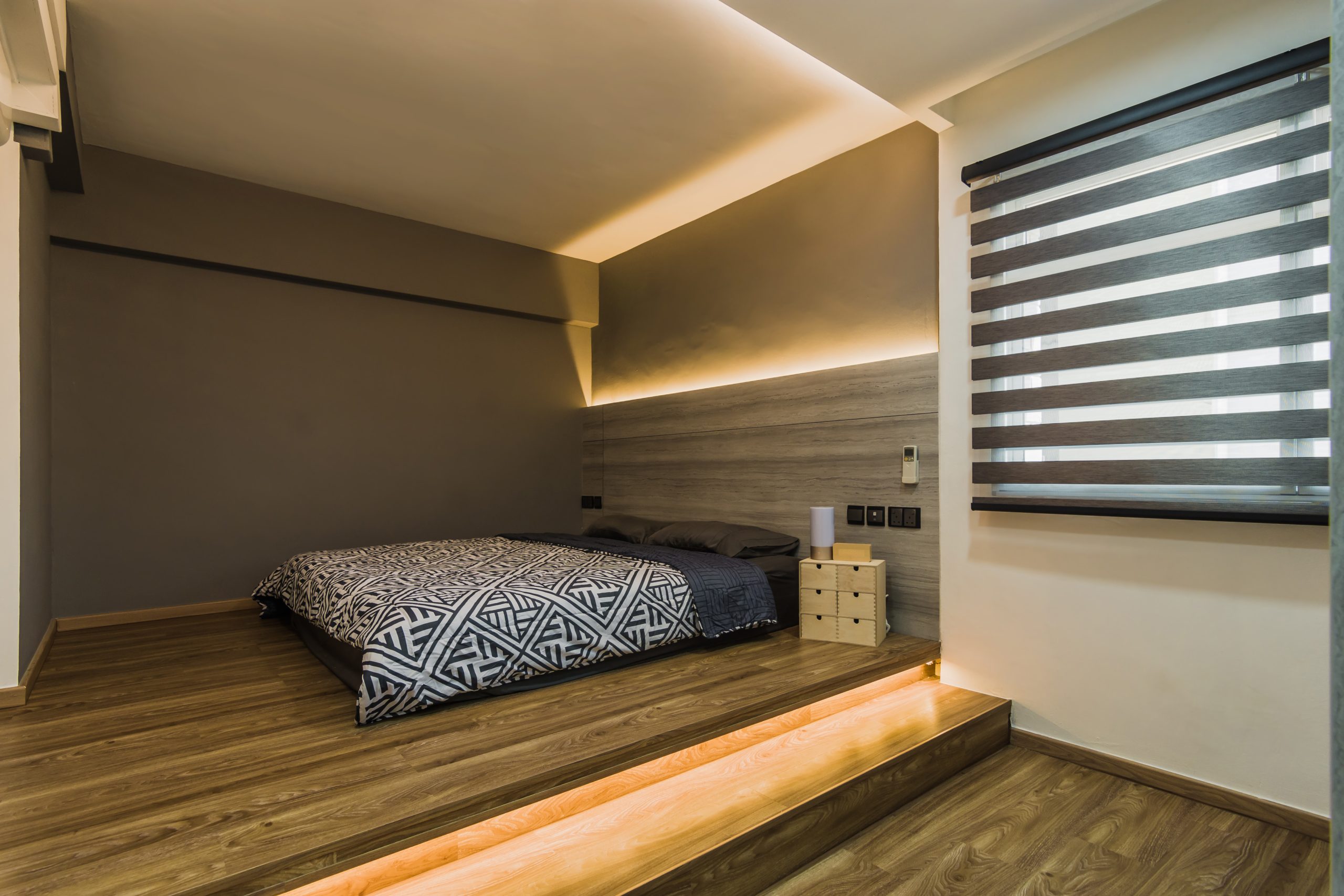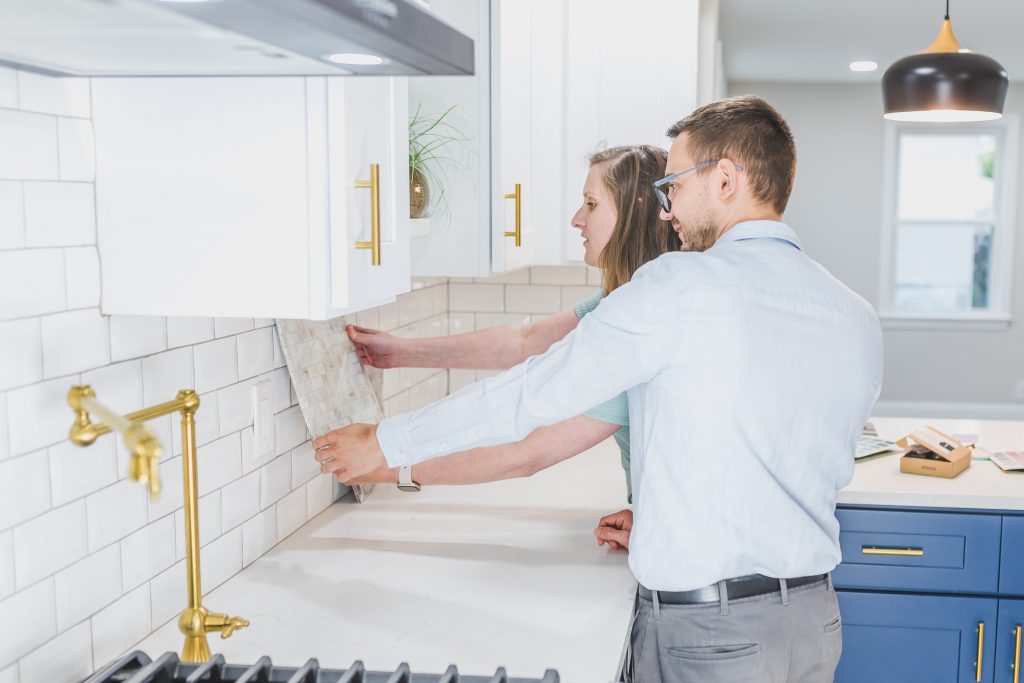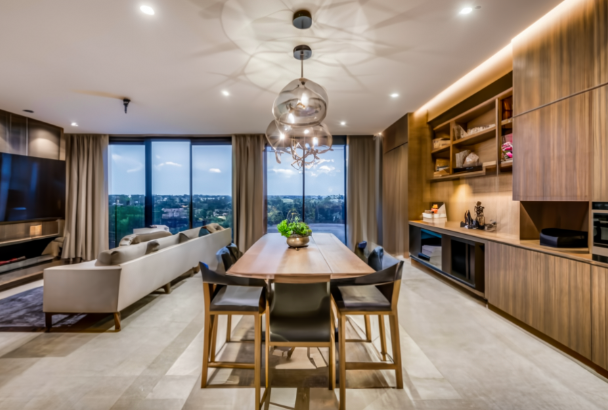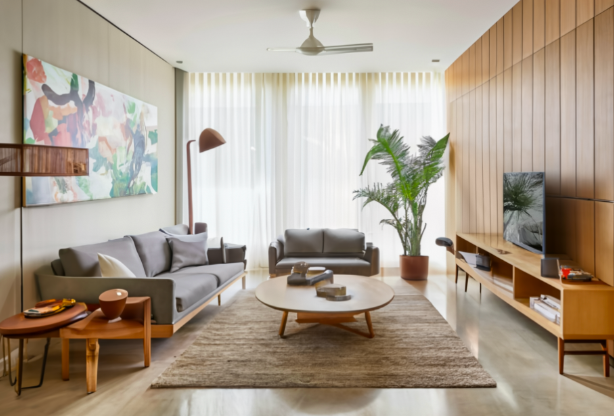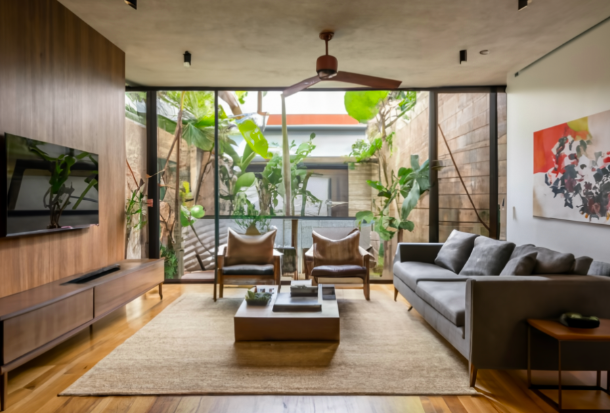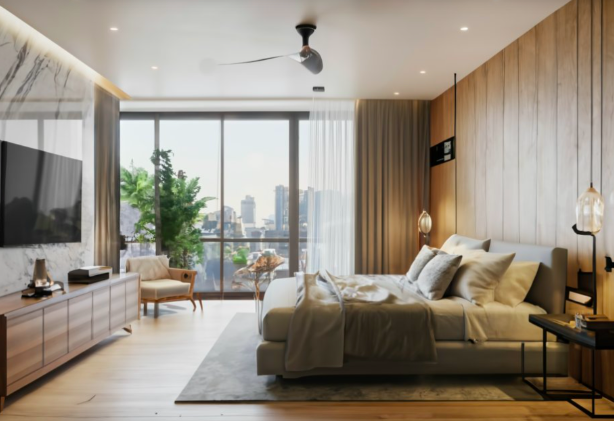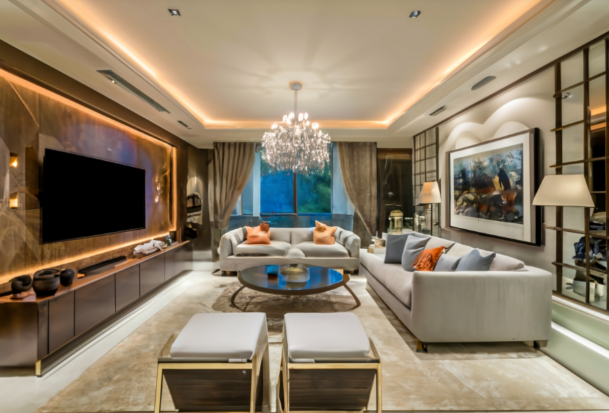Simple Scandinavian Interior Design Ideas for Your Living Room
Scandinavian design is a style that involves the simple and clean aesthetics of minimalism and simplicity. It’s not about having too many items on display, but rather, an overall feeling of calmness and harmony. The idea of simple Scandinavian interior design is to keep things simple and uncluttered. It can be done in a lot of different ways, so long as the entire room feels simple and clean.
What Are BTO Flats? A Comprehensive Guide to Singapore’s Build-To-Order Housing
In Singapore, Build-To-Order (BTO) flats have become a popular choice for many first-time homebuyers. This comprehensive guide aims to help you understand what BTO flats are, the process of securing one, and the essential factors to consider. Whether you're a young couple planning for the future or a single professional looking to invest in property, this guide is for you. Discover everything you need to know about BTO flats and start your journey to homeownership today. 1. What is the Build-To-Order (BTO) Process? What are BTO Flats? BTO flats, or Build-To-Order flats, are public housing units offered by the Housing and Development Board (HDB) in Singapore. Unlike other housing options, BTO flats are built only after a sufficient number of applications are received, ensuring that resources are used efficiently. Why Were BTO Flats Introduced? The BTO scheme was introduced to address the housing needs of Singapore’s growing population. By building flats based on demand, the government can manage housing supply more effectively, reducing the risk of overbuilding. This initiative supports sustainable urban development and ensures that eligible Singaporeans have access to affordable housing. Here's a visualization chart showing the growth of BTO flats in Singapore over the last 7 years (2017-2023). The chart highlights the number of BTO flats built each year, demonstrating a general upward trend with a peak in 2023. This visualization can help prospective buyers and stakeholders understand the increasing availability of BTO flats over recent years. 2. How Do You Qualify for a BTO Flat? What Are the Eligibility Requirements? To qualify for a BTO flat, applicants must meet several eligibility criteria, including age, citizenship, and family nucleus requirements. Typically, applicants must be Singapore citizens or permanent residents, and at least one applicant must be at least 21 years old. Income ceilings also apply, with different limits for various flat types. Who Can Apply for BTO Flats? BTO flats are available to different groups, including first-time buyers and second-timers. There are also priority schemes for families, singles, and elderly applicants. These schemes ensure that the housing needs of diverse groups are addressed. 3. How to Navigate the BTO Flat Application Process? How Do You Apply for a BTO Flat? Applying for a BTO flat involves several steps, starting with the application during the sales launch. Applicants must then wait for the outcome of their ballot and, if successful, select their flat. The process continues with the signing of the lease agreement and eventually receiving the keys to the new flat. What Are the Best Tips for Selecting a BTO Flat? Choosing the right BTO flat requires careful consideration of factors such as location, floor level, and facing. Prospective homeowners should explore various projects, compare amenities, and consider the long-term potential of their chosen unit. 4. Where Are the Best HDB BTO Flat Locations? What Are the Popular BTO Locations? HDB offers BTO flats in various locations across Singapore. Popular areas include mature estates with established amenities and non-mature estates with potential for future development. Each location has its pros and cons, depending on the buyer's priorities. Pros and Cons of Popular BTO Locations LocationProsConsPunggol- Well-developed with a range of amenities - Close to nature parks and waterfronts- Family-friendly environment- High demand, leading to competitive balloting - Ongoing construction in some areas - Longer commute to central business districtTampines- Established estate with numerous amenities - Good connectivity with multiple MRT lines - Proximity to business hubs and shopping malls- Higher resale prices compared to other areas - Crowded during peak hours - Limited new BTO launches compared to other estatesToa Payoh- Centrally located with easy access to various parts of Singapore - Mature estate with many amenities - Strong community spirit- Older flats may require more renovation - Higher property prices - Limited availability of new BTO flats These locations are popular due to their strategic positioning, amenities, and living environment. However, each location comes with its own set of advantages and challenges. Prospective buyers should consider these factors carefully when selecting a BTO flat When Are the Upcoming BTO Projects? Staying informed about upcoming BTO launches is crucial for prospective buyers. HDB regularly announces new projects, providing details about the available units and their locations. Keeping an eye on these announcements can help applicants plan their housing journey effectively. 5. How to Maximize Financial Assistance for a BTO Flat? How Do You Plan Financially for a BTO Flat? Effective financial planning is essential when purchasing a BTO flat. This includes budgeting for the down payment, monthly mortgage installments, and other related costs. Understanding the financial commitments involved can help buyers make informed decisions. What Grants and Subsidies Are Available? Various financial assistance schemes are available to help make BTO flats more affordable. These include CPF Housing Grants for first-timers, Additional Housing Grants, and Special CPF Housing Grants. Knowing the eligibility criteria and application process for these grants can significantly reduce the financial burden on buyers. 6. When Will You Secure Your BTO Flat? What Is the Timeline from Application to Moving In? The timeline for securing a BTO flat typically spans several years, from application to moving in. This includes the waiting period for ballot results, construction time, and finalization of legal and administrative steps. Understanding this timeline helps buyers manage their expectations and plan accordingly. How Do You Finalize the Purchase? Finalizing the purchase of a BTO flat involves several critical steps, including signing the lease agreement, paying the down payment, and completing legal documentation. Once these steps are completed, buyers can look forward to collecting the keys to their new home. 7. How to Transform Your BTO Flat: Renovation Ideas What Are Some Renovation Tips? Renovating a BTO flat can transform it into a personalized and comfortable living space. Popular renovation trends include creating open-plan layouts, optimizing storage solutions, and incorporating smart home technology. Budget-friendly ideas can also help maximize the value of the renovation. How Can You Enhance Your BTO Flat's Interior Design? Enhancing the interior design of a BTO flat involves making the most of available space and incorporating elements that reflect the owner's style. From maximizing small spaces to choosing the right color schemes and furniture, thoughtful design can significantly improve the flat's functionality and aesthetics. 8. Why Should You Compare BTO Flat Resale Value? What Is the Investment Potential of BTO Flats? BTO flats can be a valuable investment, with the potential for appreciation in value over time. Factors that influence resale value include location, proximity to amenities, and overall market conditions. Buyers should consider these factors when planning their purchase. When planning their purchase, buyers should consider the following factors to maximize the investment potential of BTO flats: Factors to Consider When Planning to Purchase BTO Flats Location Proximity to MRT Stations and Public Transport: Flats near MRT stations or major bus routes tend to have higher resale values due to ease of commuting. Nearby Amenities: Access to shopping malls, schools, healthcare facilities, parks, and recreational areas can enhance the attractiveness and value of the flat. Flat Type and Size Unit Layout and Size: Larger units or those with more efficient layouts may attract higher resale prices. Floor Level: Higher floor units often command premium prices due to better views and reduced noise levels. Future Development Plans Urban Redevelopment Authority (URA) Master Plan: Check for future developments in the area, such as new MRT lines, shopping centers, or business hubs, which can boost property values. Government Initiatives: Government plans for estate rejuvenation or infrastructure improvements can positively impact property prices. Supply and Demand Market Demand: High demand areas typically see better capital appreciation. Supply of BTO Flats: Areas with fewer new BTO projects may see higher demand and prices for existing flats. Condition of the Flat Age and Maintenance: Well-maintained flats, even older ones, can retain value better than poorly maintained ones. Renovation and Upgrades: Flats with modern renovations or upgrades may attract higher resale prices. Financial Considerations Grants and Subsidies: Availability of government grants can make the initial purchase more affordable. Loan Availability and Interest Rates: Favorable loan terms and interest rates can impact the overall cost and affordability of the flat. Resale Restrictions and Minimum Occupation Period (MOP) MOP Compliance: Understanding the MOP and any other resale restrictions imposed by HDB. Leasehold Tenure: The remaining lease period can significantly affect the flat's value and appeal to future buyers. Market Conditions Property Market Trends: Keeping abreast of the current real estate market trends, including price movements and buyer sentiment. Economic Factors: Overall economic conditions, such as employment rates and economic growth, can influence property values. By carefully evaluating these factors, buyers can make informed decisions that enhance the investment potential of their BTO flats. What Are the Market Trends? Staying informed about market trends can help buyers make strategic decisions regarding their BTO flat. Recent trends in the BTO resale market provide insights into price movements, demand patterns, and future predictions, aiding buyers in maximizing their investment potential. Conclusion In summary, understanding the BTO flat process, eligibility criteria, application steps, and financial planning is crucial for prospective buyers. By following this comprehensive guide, you can confidently navigate the journey to securing your BTO flat and transforming it into your dream home. Start your BTO journey today and take advantage of the opportunities available to you.
Minimalist Living Room Storage Solutions: Maximize Space, Maintain Style
Minimalism has taken the world by storm, captivating hearts with its emphasis on clean lines, uncluttered spaces, and a focus on functionality. While minimalism offers a sense of calm and promotes a more organized lifestyle, creating a minimalist living room can present a challenge – how to maintain functionality and storage needs without sacrificing the clean aesthetic? Fear not, minimalism enthusiasts! This guide explores creative storage solutions that will help you maximize space in your living room while maintaining the minimalist style you love. Key Takeaways for Minimalist Living Room Storage: Key TakeawayDescriptionMaximize Vertical SpaceUtilize walls for shelves, cabinets, and hidden storage solutions to maximize storage capacity.Embrace Multi-Functional FurnitureInvest in furniture that serves multiple purposes, maximizing space in a minimalist living room storage and minimizing clutter.Incorporate Hidden StorageUtilize hidden compartments for a clean, minimalist look.Choose Stylish and Practical ContainersUtilize aesthetically pleasing containers and baskets for both storage and organization.Regular Decluttering is KeyMaintain a minimalist haven by decluttering regularly. Understanding Storage Needs in a Minimalist Living Room Before diving into creative storage solutions, it's crucial to assess your individual storage requirements. Consider the types of items you need to store in your living room: books, magazines, throws, blankets, electronics, board games, and more. By understanding your storage needs, you can choose solutions that are both functional and maintain the minimalist aesthetic. Here's a bonus tip: Before adding new storage solutions, consider decluttering your existing belongings. Minimalism is about living with intention, so get rid of anything that is broken, unused, or no longer brings you joy. This decluttering process can significantly reduce your storage needs. Designing with Minimalist Storage Solutions in Mind Now that you understand your storage requirements, let's explore some creative ways to incorporate them into your minimalist living room design. Wall Storage Ideas: Floating Shelves: These sleek shelves add visual interest while providing storage for books, artwork, or decorative items. Hanging Cabinets: Maximize vertical space with hanging cabinets for additional storage. Choose cabinets with clean lines and minimal hardware to maintain a minimalist look. Pegboards: A versatile option, pegboards offer storage for a variety of items – hanging baskets, hats, scarves, or even displaying artwork. Hidden Wall Compartments: For the ultimate space optimization, consider built-in hidden wall compartments. These can house electronics, books, or other belongings, keeping them out of sight and maintaining a clean aesthetic. Multi-Functional Furniture Solutions: Minimalist living is all about maximizing functionality. Here are some multi-functional furniture ideas that offer storage solutions without compromising style: Ottomans with Storage: Ottomans with built-in compartments provide additional seating and a place to store blankets, pillows, or board games. Choose ottomans with clean lines and upholstery that complements your overall design. Coffee Tables with Lift-Top Surfaces: These ingenious coffee tables offer hidden storage compartments for books, magazines, or electronics. The lift-top mechanism keeps clutter out of sight when not in use. Console Tables with Storage: Invest in a sleek console table with drawers and cabinets for additional storage. This versatile piece can be used behind a sofa, as an entryway table, or even a media console. Hidden Storage Ideas: Thinking beyond traditional furniture, explore these creative hidden storage solutions: Built-in Storage Benches: Incorporate built-in storage benches along walls or windowsills. These benches provide additional seating and hidden storage compartments for blankets, pillows, or other living room essentials. Ottomans that Double as Coffee Tables: These innovative ottomans offer dual functionality. Use them as ottomans for extra seating, and when needed, flip the top to transform it into a coffee table. Creative Storage Solutions: Don't be afraid to get creative! Utilize vintage suitcases as side tables with hidden storage compartments or repurpose a ladder into a towel rack. Choosing Stylish and Functional Storage Solutions While functionality is crucial, your storage solutions should also complement your minimalist aesthetic. Here are some tips for choosing stylish storage options: Material Selection: Opt for natural materials like wood, woven baskets, or sleek metal for a minimalist look. These materials add warmth and texture to your space while maintaining clean lines. Prioritize Clean Lines: Choose storage solutions with clean lines and minimal hardware. Avoid ornate details or excessive embellishments that can clash with the minimalist aesthetic. Maintain Cohesiveness: Utilize consistent colors and styles for your storage containers to create a unified look. Consider using a color palette of neutrals like white, gray, or black for a classic minimalist vibe. You can also incorporate pops of color with a single statement basket or throw pillow, but be mindful of keeping the overall aesthetic balanced. Maintaining a Minimalist Living Space A key aspect of maintaining a minimalist living room, and indeed a minimalist lifestyle overall, is regular decluttering. Schedule regular decluttering sessions to prevent clutter buildup and ensure your storage solutions don't become overwhelmed. Here are some decluttering tips to help you embrace minimalism and create a peaceful living space: The One-Year Rule: This is a handy guideline to help you decide what to keep and what to let go of. If you haven't used an item in the past year, consider letting it go. However, there are some exceptions: Sentimental Items: These hold a special place in your heart and evoke positive memories. Keep them if they bring you joy, but be mindful of not letting sentimental clutter overwhelm your space. Consider taking photos or digital scans of sentimental items to free up physical space. Seasonal Decorations: Holiday decorations and seasonal items are perfectly acceptable to keep, but ensure you have designated storage for them outside of their designated season. Rotate these items throughout the year to maintain a minimalist aesthetic. Embrace the Benefits of Minimalism: Decluttering isn't just about getting rid of stuff; it's about creating a more mindful and peaceful living environment. Here are some benefits of minimalism to keep in mind when decluttering: Reduced Stress: Clutter can be visually overwhelming and contribute to anxiety. By decluttering, you create a calmer and more serene living space. Improved Organization: With fewer belongings, it's easier to keep your living room organized. You'll know exactly where everything is located, saving you time and frustration. Enhanced Cleaning Efficiency: A minimalist living room is easier to clean, as there are fewer surfaces and objects to navigate around. This frees up more time for the things you enjoy. Greater Appreciation for What You Have: Letting go of unused items can make you appreciate the things you truly value. This can lead to a more mindful and grateful way of living. Decluttering Strategies: The KonMari Method: This popular method by Marie Kondo encourages you to hold each item and ask yourself if it "sparks joy." If not, thank the item for its service and let it go. The Minimalist Game: Set a timer for 15 or 30 minutes and challenge yourself to declutter a specific area or category of items. The One-In, One-Out Rule: For every new item you bring into your living room, consider getting rid of an old one. This helps to maintain a balanced and clutter-free space. Maintaining Minimalism: Decluttering is an ongoing process. Here are some tips for maintaining a minimalist living room: Develop Minimalist Habits: Be mindful of your purchasing habits. Only buy items you truly need and that will add value to your life. Resist Impulse Buys: Before making a purchase, ask yourself if you truly need the item and where you will store it. Consider borrowing or renting items you only need occasionally. Gift with Intention: When giving gifts, consider experiences or consumable items that won't contribute to clutter. Embrace Multi-Purpose Items: Opt for furniture and storage solutions that serve multiple purposes, minimizing the overall number of items you need. By incorporating these tips and strategies into your routine, you can maintain a minimalist living room that is both functional and stylish. Remember, minimalism is a journey, not a destination. Embrace the process of decluttering and enjoy the peace and serenity that comes with living with less. Living Room Storage Solutions: Beyond the Basics This article has explored various creative storage solutions for minimalist living rooms. Here are some additional creative storage ideas for a minimalist living room to consider: Living Room Storage Baskets: Woven baskets are a stylish and practical storage option for throws, blankets, pillows, or even toys. Choose baskets in natural materials that complement your color scheme. Behind-the-Sofa Storage: Utilize the space behind your sofa with slim storage consoles or narrow shelves. These can house books, magazines, or decorative items, adding visual interest without overwhelming the space. Vertical Planters: Maximize vertical space and add a touch of greenery with hanging planters or wall-mounted shelves for displaying plants. Media Console with Storage: Invest in a media console with ample storage compartments for organizing electronics and cables in a minimalist living room. Choose a console with clean lines and a low profile to maintain a minimalist aesthetic. Conclusion Creating a minimalist living room with ample storage doesn't have to be a challenge. By incorporating storage into minimalist furniture, utilizing hidden storage options, and prioritizing regular decluttering, you can maintain a clean and organized space that reflects your minimalist style. Remember, the key is to personalize your storage solutions based on your individual needs and preferences. Don't let clutter disrupt your minimalist lifestyle. Contact MRD today for a consultation and discover how our creative storage solutions can help you maintain a beautifully organized and serene living room. Experience the joy of minimalist living with MRD's expert design services. Reach out now and start your journey to a perfectly curated and clutter-free living space!
Simple Bedroom Design Ideas: Make Your Bedroom Feel Comfortable and Relaxing
The bedroom is the ultimate place to unwind after a long day of work. You can even say it’s the last place where you can really get away from the rest of the world. But it’s also one of the easiest places to let your stress build up and prevent you from having any restful nights. It doesn’t matter if you are a young couple looking for some intimacy or an older person seeking peace and quiet. No matter what type of bedroom you have, there are ways to make your small space feel comfortable and relaxing. In this article, I am going to share the best simple bedroom design ideas that you can apply to your own space. I will also give you some great tips and tricks to make your bedroom feel as welcoming as possible. Here are some of the simple bedroom design ideas for you: Wall design stickers Bedroom You can turn your child's bedroom into a space full of flowers or butterflies by adding some butterflies stickers to the walls. It will make bedroom interior design seem more welcoming. You can use stickers on her wall to decorate and create expressive elements for small bedroom.
Inspired Simple Kitchen Design Ideas in Singapore
If you have been looking for inspiration on home kitchen design ideas in Singapore, look no further. We have compiled 7 best design inspirations ideas for simple kitchen designs that are so inspiring that you might want to take a look at these before starting your next kitchen renovation project. This article contains simple kitchen design ideas which is suitable for those who are looking for some design ideas on how to decorate the kitchen.
Modern Living in a Modern World: Unveiling Contemporary House Design Trends in Singapore
Singapore, a nation renowned for its architectural innovation and forward-thinking approach, is at the forefront of contemporary house design trends. Homes are no longer just shelters; they are sanctuaries that reflect our modern lifestyles, prioritizing functionality, technology, and a connection to nature. This comprehensive guide delves into the key design elements shaping contemporary houses in Singapore, empowering you to create a stylish and functional space that reflects your unique needs and aspirations. Embrace the Modern: An Overview of Contemporary House Design Trends Contemporary house design in Singapore is a beautiful blend of aesthetics and functionality, characterized by: Emphasis on Minimalistic Design: Gone are the days of clutter and excess. Contemporary design embraces clean lines, uncluttered spaces, and a focus on functionality. This approach creates a sense of calm and order, perfect for busy lives in a fast-paced city. Integration of Smart Home Technology: Technology seamlessly integrates into contemporary houses. Imagine controlling lighting, temperature, and even appliances with your voice or smartphone. Smart home features enhance convenience, security, and energy efficiency. Sustainable and Eco-Friendly Materials: Environmental consciousness is a key driver in contemporary design. Sustainable materials like bamboo, recycled wood, and energy-efficient appliances are increasingly popular choices, reflecting a commitment to responsible living. A Symphony of Neutrals with Bold Accents: Color Palette and Material Selection Color palettes and material selection play a crucial role in defining the aesthetics of a contemporary home: Neutral Colors with Pops of Bold Hues: Neutral colors like white, beige, and grey form the foundation of contemporary color palettes. These colors create a sense of spaciousness and serenity, serving as a perfect canvas for pops of bold accents. Imagine a vibrant statement wall or colorful furniture pieces adding personality to the space. Use of Natural Materials: Natural materials like wood, stone, and metal are popular choices in contemporary houses. These materials add warmth, texture, and a connection to nature. Wood might be used for flooring or furniture, while exposed brick walls or stone countertops can add a touch of rustic elegance. Form Meets Function: Furniture and Decor Elements Contemporary furniture and decor prioritize functionality while adding a touch of style: Open-concept Layouts with Functional Furniture: Open-concept layouts are a hallmark of contemporary design, fostering a sense of spaciousness and connection between rooms. Furniture in these spaces is multifunctional and strategically placed to define different areas. Think modular sofas, ottomans with storage space, and sleek, built-in shelves that maximize functionality without compromising aesthetics. Statement Pieces and Artistic Accents: While minimalism reigns supreme, statement pieces and artistic accents add personality to contemporary spaces. Imagine a bold sculpture, a one-of-a-kind rug, or a collection of family heirlooms displayed with pride. These elements tell a story about the homeowner and personalize the space. Illuminating Your Space: Lighting and Fixtures Lighting plays a crucial role in creating the ambiance and functionality of a contemporary home: Natural Lighting with Large Windows and Skylights: Natural light is a priority in contemporary design. Large windows and skylights are incorporated wherever possible to maximize natural light penetration. This not only reduces the need for artificial lighting but also fosters a connection with the outdoors. Energy-efficient Lighting Fixtures: When artificial lighting is needed, energy-efficient LED fixtures are the preferred choice. These lights offer superior light quality while consuming less energy, further contributing to a sustainable living environment. Bringing the Outdoors In: Outdoor Spaces and Greenery The boundaries between indoor and outdoor spaces are blurring in contemporary design: Incorporation of Indoor-Outdoor Living Spaces: Sliding glass doors or retractable walls create seamless transitions between indoor living areas and outdoor spaces. This allows for effortless entertaining and fosters a connection with nature. Imagine relaxing on a patio extension of your living room or enjoying a meal in a lushly landscaped garden. Vertical Gardens and Green Walls: Vertical gardens and green walls are a fantastic way to incorporate greenery into even compact spaces. These living walls not only add a touch of beauty but also improve air quality and create a calming atmosphere. Here are some additional tips for incorporating contemporary house design trends into your Singaporean home: Seek Inspiration: Browse design magazines, online resources, and showrooms for inspiration. Attend local design events or visit homes featured in architecture tours. Social media platforms like Pinterest and Instagram are also great resources for discovering contemporary design trends. Consult with a Professional: Consider collaborating with an architect or interior designer who specializes in contemporary design. They can help you translate your vision into reality, taking into account your specific needs, budget, and space constraints. A professional can also provide valuable insights on the latest trends and sustainable materials available in Singapore. Embrace Innovation: The world of contemporary design is constantly evolving. Stay informed about the latest advancements in smart home technology, sustainable materials, and innovative furniture solutions. This will allow you to create a home that is not just stylish but also future-proof. A Modern Haven: Recap of Key Contemporary House Design Trends in Singapore Contemporary house design in Singapore is a dynamic and exciting space where functionality meets aesthetics. By embracing these key trends – minimalism, smart technology, sustainable materials, neutral palettes, natural light, and a connection to nature – you can create a modern haven that reflects your lifestyle and aspirations. To create a functional and beautiful contemporary home that reflects the unique blend of modernity and luxury in Singapore, partner with MRD. Our team of experts can guide you through the design process, incorporating cutting-edge technology, eco-friendly materials, and sleek aesthetics to create a space that is both stylish and sustainable. Contact us today to schedule a consultation and start transforming your home into a modern oasis that you love.
A Symphony of Cultures: Exploring Singaporean Influences on Bedroom Design
Singapore, a vibrant island nation, is a melting pot of cultures. This rich tapestry extends to the most personal space in a home – the bedroom. Here, functionality meets cultural heritage, creating a space that reflects not just comfort but also a resident's identity. This comprehensive guide delves into the diverse influences that shape Singaporean bedroom design, from age-old traditions to cutting-edge trends. A Tapestry Woven from Many Threads: Understanding Cultural Influences Singapore's diverse cultural landscape is a treasure trove of design inspiration. The major ethnicities – Chinese, Malay, and Indian – each contribute unique elements that influence bedroom design Singapore. Understanding these cultural influences allows us to appreciate the intricate details and symbolism that personalize Singaporean bedrooms. Why Culture Matters: Cultural influences go beyond mere aesthetics. They represent beliefs, traditions, and practices that contribute to a sense of well-being and cultural identity within the bedroom, a space for rest, relaxation, and rejuvenation. Rooted in Heritage: Traditional Influences on Singaporean Bedrooms A look at Singapore's history reveals its impact on bedroom design: Influence of Chinese Culture: Harmony and balance are paramount in Chinese culture. These principles manifest in the application of Feng Shui. This ancient practice dictates furniture placement, color palettes, and even object arrangement to promote positive energy flow (known as qi) and well-being. Bright colors like red (symbolizing luck) and gold (symbolizing prosperity) are often used, along with auspicious symbols like dragons or phoenixes. Influence of Malay Culture: Nature is deeply ingrained in Malay culture, evident in the use of natural materials like wood and rattan in bedroom furniture. These materials create a sense of warmth and connection to the natural world. Intricate floral or geometric patterns, inspired by batik fabrics, might adorn walls or bedding, adding a touch of cultural elegance and craftsmanship. Influence of Indian Culture: Indian culture celebrates vibrancy and color. Bedrooms might showcase rich jewel tones like deep blue or emerald green, paired with contrasting fabrics like silk or embroidered tapestries. These elements create a visually stunning and culturally significant space that reflects the vibrancy of Indian heritage. Embracing the Modern World: Contemporary Influences on Bedroom Design Singapore, a global hub, readily adopts modern trends that influence bedroom design: Influence of Western Culture: Western influence manifests in minimalist design principles. Clean lines, uncluttered spaces, and a focus on functional and practical furniture dictate furniture choices and overall layout. This approach promotes a sense of calm and order within the bedroom, ideal for busy lifestyles in a fast-paced city. Influence of Technology: Technology is seamlessly integrated into modern Singaporean bedrooms. Smart home features like voice-controlled lighting, automated blinds, and temperature control systems enhance comfort and convenience. Imagine waking up to gentle sunrise lighting or falling asleep to calming music, all controlled with a simple voice command. Technology personalizes the bedroom experience and caters to individual preferences. A Harmonious Blend: The Fusion of Traditional and Modern Influences Singaporean bedroom design is a beautiful dance between tradition and modernity: Case Studies in Cultural Fusion: Imagine a modern platform bed crafted from reclaimed teak wood, a nod to Malay culture, adorned with a silk bedspread featuring intricate embroidery patterns inspired by Indian traditions. Feng Shui principles might guide the placement of furniture, ensuring a harmonious flow of energy within the space. This exemplifies the seamless integration of cultural elements in a modern bedroom, creating a space that is both stylish and culturally resonant. Designers Embracing Cultural Fusion: Singaporean designers are adept at incorporating cultural influences into their work. They might use traditional motifs in a modern context, like featuring a batik-inspired wallpaper mural in a minimalist bedroom or utilizing natural materials like rattan for contemporary furniture pieces. This fusion creates a space that is both stylish and culturally relevant. A Legacy Endures: The Significance of Cultural Influences and a Glimpse into the Future Cultural influences not only enrich Singaporean bedroom design but also connect residents to their heritage: Recap of Cultural Significance: Understanding cultural influences allows us to appreciate the symbolism and meaning behind design choices. It creates a space that reflects personal heritage and cultural identity while embracing modern functionality and comfort. A culturally inspired bedroom becomes a personal sanctuary that tells a story. Future Trends and Possibilities: As Singapore continues to evolve, we can expect even more exciting integrations of cultural influences in bedroom design. Imagine the possibilities of using sustainable materials inspired by traditional practices or incorporating cutting-edge technology that celebrates cultural motifs. The future of Singaporean bedroom design promises a vibrant tapestry woven from tradition and innovation. Embrace Your Heritage, Design Your Dreamscape Singaporean bedroom design is a testament to the nation's cultural richness. Understanding and appreciating these influences empowers you to create a bedroom that reflects your unique personality, cultural heritage, and modern sensibilities. The result will be a haven of comfort, reflecting your heritage and aspirations for the future. So, unleash your creativity and design a bedroom that is not just a place to sleep but a reflection of your unique cultural story. To create a harmonious and beautiful bedroom that reflects the unique cultural influences of Singapore, partner with MRD. Our team of experts can help you design a space that incorporates local elements, functional storage solutions, and a cohesive color scheme. Contact us today to schedule a consultation and start transforming your bedroom into a sanctuary that reflects your personality and cultural heritage.
Crafting an Eco-Haven: A Guide to Sustainable Living Room Design in Singapore
Singapore, a nation renowned for its urban planning and environmental consciousness, is a prime location for embracing sustainable living practices. This philosophy extends to the heart of our homes, the living room – a space for relaxation, entertainment, and social gatherings. Sustainable living room design transcends mere aesthetics; it fosters a healthy environment for ourselves and the planet. This comprehensive guide equips you with the knowledge and strategies to create a stylish and eco-friendly living room that reflects your commitment to a greener future. Living Green, Living Well: Defining Sustainable Living Room Design Sustainable living room design embraces principles that minimize environmental impact while promoting health and well-being. It's about creating a space that's not only aesthetically pleasing but also resource-efficient and built with responsible materials. Why Embrace Sustainable Design in Singapore? Singapore's limited land resources and commitment to environmental sustainability make eco-conscious design choices more crucial than ever. Combating Climate Change: Sustainable practices reduce your carbon footprint by minimizing reliance on energy-intensive systems and promoting energy conservation. Promoting Health and Well-being: Sustainable materials and proper ventilation create a healthier living environment, free from harmful chemicals and pollutants. Cost Savings: Energy-efficient practices and responsible furniture choices can translate to long-term cost savings on utility bills and furniture replacements. The Cornerstones of Sustainability: Key Elements of Sustainable Living Room Design Sustainable living room design is a holistic approach that considers various elements: Eco-Friendly Materials: Opt for recycled or sustainably sourced materials like bamboo furniture, cork flooring, or reclaimed wood. These materials minimize environmental impact while adding a unique aesthetic touch to your living room. Energy-Efficient Lighting: Replace traditional incandescent bulbs with LED lighting options. LEDs offer superior energy efficiency, last longer, and produce less heat, contributing to lower energy consumption. Indoor Plants: Integrating plants into your living room isn't just aesthetically pleasing; it improves air quality by absorbing harmful pollutants. Choose low-maintenance plants like Snake Plants or Spider Plants for a touch of greenery that thrives indoors. Upcycled Furniture: Give pre-loved furniture a new lease on life! Look for vintage pieces or explore upcycling projects to breathe new life into old furniture, reducing waste and adding a touch of character to your space. Smart Home Technology: Smart thermostats and lighting systems allow for better energy control. These technologies can be programmed to regulate temperature and lighting based on your needs, further reducing energy consumption. Practical Steps to a Sustainable Living Room in Singapore Living sustainably doesn't require drastic changes; small steps can make a significant impact: Harness Natural Light: Maximize natural light by opting for sheer curtains and strategically placing furniture away from windows. Natural light reduces reliance on artificial lighting during the day. Embrace Proper Insulation: Ensure good insulation in your living room walls and windows. Proper insulation helps maintain a comfortable temperature and reduces energy consumption for cooling or heating. Ventilation is Key: Proper ventilation is crucial for a healthy living environment. Open windows regularly to allow fresh air circulation and remove pollutants. Sustainable Furniture Options: Consider furniture made from recycled materials, certified wood sources, or opt for second-hand furniture to minimize your environmental footprint. Incorporate Greenery: Indoor plants not only add a touch of life but also purify the air and contribute to a more relaxing atmosphere. Showcasing Sustainability: Case Studies of Sustainable Living Room Designs in Singapore Sustainable living room design isn't just a trend; it's a reality across various spaces: Residential Spaces: Homes in Singapore are embracing sustainable features like light shelves that maximize natural light penetration, energy-efficient LED lighting, and furniture crafted from recycled materials. Commercial Spaces: Eco-conscious businesses are incorporating sustainable elements into their living room spaces. Restaurants might feature furniture made from reclaimed wood and utilize energy-efficient lighting systems. Public Spaces: Libraries and community centers are adopting sustainable practices. Imagine well-lit spaces with skylights and ample natural light, coupled with comfortable seating crafted from recycled or upcycled materials. Overcoming Obstacles: Challenges and Solutions for Sustainable Living Room Design in Singapore While the benefits are undeniable, implementing sustainable design has its challenges: Budget Constraints: Sustainable materials might initially appear more expensive. However, consider the long-term cost savings in terms of energy bills and reduced furniture replacement. Explore budget-friendly options like upcycled furniture or sustainable alternatives from local vendors. Limited Availability of Eco-Friendly Materials: The availability of some eco-friendly materials might be limited in Singapore. Research and explore options from local suppliers who specialize in sustainable materials. Consider joining online communities or forums dedicated to sustainable living for recommendations and resource sharing. Lack of Awareness: Spreading awareness about the benefits of sustainable living room design is crucial. Educate yourself and share your knowledge with friends and family. Social media platforms can be powerful tools for promoting sustainable practices. Government Policies and Initiatives: Government policies and initiatives play a significant role in encouraging sustainable practices. Stay informed about government grants or subsidies that might support the use of eco-friendly materials or energy-efficient appliances. Advocate for policies that promote sustainable living and make eco-friendly options more accessible. A Sustainable Future for Living Rooms in Singapore The future of living room design in Singapore is brimming with possibilities for sustainability: Growing Trend towards Sustainability: Sustainability is becoming a dominant trend, not just in Singapore but globally. Consumers are increasingly prioritizing eco-friendly products and living spaces. This growing demand will drive innovation in sustainable materials and design solutions. Innovation in Sustainable Design Solutions: Technological advancements are paving the way for innovative sustainable design solutions. Imagine furniture crafted from recycled ocean plastic or wall paints made with natural ingredients. The future holds exciting possibilities for eco-friendly materials and technologies that enhance the aesthetics and functionality of our living rooms. Role of Technology in Advancing Sustainable Living Room Design: Smart home technology will play a crucial role in optimizing energy consumption. Imagine a future where AI-powered systems automatically adjust lighting and temperature based on real-time occupancy and weather conditions. Embrace Sustainability, Elevate Your Living Space Sustainable living room design isn't just about environmental responsibility; it's about creating a healthier, more comfortable, and stylish living space for yourself and your loved ones. Sustainable living room design prioritizes eco-friendly materials, energy efficiency, and responsible resource utilization. The benefits are numerous – reduced environmental impact, improved health, and potential cost savings. Embrace practical steps like using natural light, incorporating greenery, and exploring sustainable furniture options. To create a functional and beautiful living space that harmonizes with nature, partner with MRD. Our team of experts can guide you through the process of sustainable living room design, incorporating eco-friendly materials and practices while creating aesthetically pleasing spaces. Contact us today to schedule a consultation and start transforming your living room into a haven that you love.
Rest Easy and Breathe Deep: A Guide to Sustainable Bedroom Design
Our bedrooms are havens for relaxation and rejuvenation. But did you know that the design choices you make for this sanctuary can also have a significant impact on the environment? Sustainable bedroom design is an emerging trend that prioritizes eco-friendly materials, energy efficiency, and responsible resource utilization. This comprehensive guide delves into the world of sustainable bedrooms, exploring practical strategies and design elements that create a calming and beautiful space while minimizing your environmental footprint. Why Embrace Sustainability in Your Bedroom? Sustainable practices are no longer a niche concept in interior design. They are becoming an essential consideration for creating healthy and responsible living spaces. Here's why incorporating sustainable principles into your bedroom design matters: Environmental Impact: The production of conventional furniture, building materials, and textiles can have a significant environmental impact, from deforestation and resource depletion to pollution. Sustainable choices can reduce this impact and create a healthier planet for future generations. Improved Indoor Air Quality: Traditional furniture, paints, and finishes often emit harmful Volatile Organic Compounds (VOCs). Sustainable alternatives prioritize non-toxic materials, creating a healthier indoor environment for better sleep and overall well-being. Reduced Energy Consumption: Sustainable design encompasses energy-efficient appliances, lighting solutions, and smart technology integration. This translates to lower energy bills and a reduced carbon footprint. Responsible Resource Utilization: Sustainable practices advocate for upcycling and repurposing existing furniture, minimizing waste, and promoting responsible consumption habits. Building a Sustainable Sanctuary: Materials that Matter The foundation of a sustainable bedroom starts with the materials you choose: Organic Bedding and Linens: Opt for organic cotton, linen, or hemp bedding. These natural materials are breathable, hypoallergenic, and often produced using sustainable farming practices. Non-toxic Paint and Finishes: Traditional paints can release harmful VOCs. Choose low-VOC or VOC-free paints and finishes for walls, furniture, and trim. Opt for natural alternatives like beeswax for furniture polish. Sustainable Wood Furniture: Look for furniture crafted from sustainably sourced wood with certifications like FSC (Forest Stewardship Council) or PEFC (Programme for the Endorsement of Forest Certification). This ensures responsible forest management practices. Eco-friendly Flooring Options: Consider sustainable flooring options like cork, bamboo, or recycled wood. These materials offer a beautiful aesthetic while minimizing environmental impact. Embrace Efficiency: Energy-Conscious Design Elements Sustainable design prioritizes efficient energy use: LED Lighting: Swap traditional incandescent bulbs with energy-efficient LED lighting. LEDs offer superior brightness, last longer, and consume significantly less energy. Energy-efficient Appliances: Consider replacing older appliances with energy-star certified models. This can significantly reduce energy consumption, especially for electronics like televisions or air purifiers. Use of Natural Light: Maximize natural light by opting for sheer curtains or blinds. This reduces reliance on artificial lighting during the day and creates a brighter and more welcoming atmosphere. Breathing Easy: Improving Indoor Air Quality A sustainable bedroom prioritizes healthy air quality for better sleep: Air-purifying Plants: Introduce nature's air purifiers – plants like snake plants, spider plants, and peace lilies can help filter toxins and pollutants from the air. VOC-free Furniture and Materials: As mentioned earlier, prioritize furniture and materials that are VOC-free or low-VOC. This significantly reduces harmful emissions and promotes a healthier indoor environment. Proper Ventilation Systems: Ensure proper ventilation in your bedroom. Open windows regularly for fresh air circulation, and consider investing in an air purifier for additional air quality improvement. Waste Not, Want Not: Strategies for Waste Reduction Sustainable design champions responsible resource utilization: Upcycling and Repurposing Furniture: Give new life to old furniture pieces. Reupholster an antique armchair, refinish a vintage nightstand, or transform a family heirloom into a unique bedside table. Recycling and Waste Management: Be mindful of waste generated during renovations or furniture updates. Recycle materials whenever possible and dispose of non-recyclables responsibly. Minimalist Design Principles: Embrace a minimalist approach. Avoid clutter and unnecessary furniture pieces. Opt for multi-functional furniture that serves multiple purposes, maximizing space and minimizing clutter. Conserving Every Drop: Water Conservation Practices Sustainable design extends to water conservation: Low-flow Fixtures: Install low-flow showerheads and faucets in your bathroom. This simple change can significantly reduce water consumption without compromising functionality. Rainwater Harvesting: In some regions, consider rainwater harvesting systems to collect rainwater for irrigation or other non-potable uses. This can reduce reliance on municipal water supplies. Water-saving Bathroom Fixtures: Opt for water-saving toilets that use less water per flush. Consider dual-flush toilets that offer a choice of flush volumes depending on waste. Smarter Living: Integrating Technology for Sustainability Smart technology can enhance a sustainable bedroom: Smart Thermostats: Install a smart thermostat that can be programmed to adjust room temperature automatically based on your needs and preferences. This can optimize energy use for heating and cooling. Home Automation for Energy Efficiency: Consider smart home automation systems that allow you to control lighting, appliances, and thermostats remotely. This allows for better management of energy consumption, even when you're not home. Monitoring and Reducing Energy Consumption: Many smart home systems provide real-time energy consumption data. This allows you to identify areas where you can further optimize energy use and make informed decisions to reduce your environmental footprint. Conclusion Sustainable bedroom design isn't just about eco-friendly materials – it's a holistic approach to creating a healthy, comfortable, and responsible living space. By making informed choices about materials, incorporating energy-efficient practices, and utilizing smart technology, you can transform your bedroom into a haven for relaxation and rejuvenation while minimizing your environmental impact. Remember, even small changes can make a significant difference. So, embrace sustainable practices, breathe easy in your eco-conscious sanctuary, and sleep soundly knowing you're contributing to a healthier planet. Contact MRD today to begin your journey toward creating a sustainable bedroom design that you'll love to come home to. Our team is ready to collaborate with you, bringing innovative ideas and exceptional design skills to the table. Together, we can create a space that not only meets but exceeds your expectations.
Step into Opulence: A Guide to Creating a Luxurious Living Room
The living room – the heart of the home – deserves to reflect your style and personality. But for those who crave a touch of grandeur, a luxurious living room can be the ultimate expression of comfort, sophistication, and refined taste. This comprehensive guide delves into the world of luxurious living rooms, exploring key design elements, popular styles, and practical considerations to transform your space into an opulent haven. The Hallmarks of Luxury: What Defines a Luxurious Living Room? A luxurious living room transcends mere aesthetics. It's a space that evokes a sense of indulgence, comfort, and timeless elegance. Here are some key characteristics that define a luxurious living room: High-quality materials: Luxury thrives on quality. Think rich fabrics like velvet and silk, opulent textures like marble and wood, and handcrafted furniture pieces that exude an aura of craftsmanship. Attention to detail: Intricate details make all the difference. This can be seen in the use of elegant hardware on furniture, intricate millwork on walls, or thoughtfully arranged artwork and accessories. Cohesive design: A luxurious living room feels planned and intentional. The color scheme, textures, and furniture styles all work together in harmony, creating a visually unified and aesthetically pleasing space. Comfort and functionality: Luxury doesn't come at the expense of comfort. Plush seating, ample lighting for different moods, and a layout that promotes conversation and relaxation are all essential elements. Incorporation of technology: Smart home integration allows for seamless control of lighting, sound systems, and climate, enhancing convenience and creating a truly luxurious living experience. Crafting Your Sanctuary: Factors to Consider in Luxurious Living Room Design Before embarking on your luxurious living room journey, consider these important factors: Furniture Selection: Invest in high-quality furniture pieces with classic lines and timeless designs. Opt for pieces crafted from solid wood, leather upholstery, or luxurious fabrics. Consider incorporating a statement piece like a grand Chesterfield sofa or a handcrafted coffee table. Lighting: Lighting plays a crucial role in setting the mood and ambience. Utilize a layered lighting approach with a combination of overhead lighting, accent lighting, and task lighting. Chandeliers, sconces, and strategically placed lamps can add a touch of grandeur and ensure a well-lit space for various activities. Color Scheme: Luxurious living rooms often embrace rich and sophisticated color palettes. Deep jewel tones like emerald green or sapphire blue create a dramatic effect, while warm tones like gold or bronze add a touch of opulence. Consider balancing bolder colors with neutrals like cream or beige for a touch of serenity. Textures and Fabrics: Luxury is all about creating a sensory experience. Luxurious fabrics like velvet, silk, and cashmere add a touch of indulgence, while textures like marble, wood, and metallic accents elevate the overall feel. Accessories and Decor: Carefully curated accessories complete the luxurious look. Artwork depicting classic themes, statement sculptures, or antique pieces can add personality and conversation starters. However, avoid cluttering the space – select a few well-chosen items that complement the overall design. Certain features consistently elevate a living room to luxurious heights: Statement Furniture Pieces: A grand sofa, a tufted armchair, or a vintage chaise lounge can serve as the focal point of the room, commanding attention and exuding an aura of luxury. High-End Lighting Fixtures: A dazzling chandelier, strategically placed sconces with crystal accents, or a sleek floor lamp can add a touch of glamour and elevate the space. Customized Built-Ins: Built-in bookshelves, cabinets, or entertainment centers can add a touch of sophistication and offer valuable storage space. Customization allows for a perfect fit and enhanced functionality. Elegant Window Treatments: Luxurious window treatments like floor-to-ceiling drapes in rich fabrics or Roman shades in opulent textures can frame the windows beautifully and add a touch of drama. Luxurious Flooring Options: Hardwood floors in rich stains, plush carpets in deep hues, or even opulent marble flooring can add a touch of luxury underfoot. A Symphony of Styles: Popular Luxurious Living Room Designs The beauty of luxurious living rooms lies in their versatility. Here are some popular styles that cater to diverse tastes: Modern and Contemporary: Clean lines, sleek furniture, and a focus on functionality define modern and contemporary luxurious living rooms. High-contrast color palettes and statement lighting create a sophisticated and visually striking space. Classic and Traditional: Draw inspiration from timeless elegance with rich wood furniture, intricate details, and warm color palettes. Traditional artwork, plush carpets, and antique accents add a touch of grandeur. Glamorous and Art Deco: Embrace the glitz and glamour of Art Deco with bold geometric patterns, metallic accents, and high-gloss finishes. Velvet upholstery, mirrored furniture, and statement lighting create a dramatic and visually captivating space. Minimalist and Chic: Minimalism takes on a luxurious twist with high-quality materials and a focus on clean lines. Neutral color palettes, carefully curated furniture pieces, and statement lighting create a sophisticated and serene space. Eclectic and Bohemian: For those who crave a touch of the unconventional, a luxurious bohemian living room can be a stunning option. Rich textures like velvet and silk are combined with eclectic furniture pieces, global-inspired artwork, and layered rugs to create a unique and visually captivating space. Form Meets Function: Elements of Luxurious Living Room Layout A well-planned layout is vital for maximizing both style and functionality: Furniture Arrangement: Create conversation areas by arranging furniture pieces around a coffee table or fireplace. Ensure ample space for walking and avoid overcrowding the room. Space Planning: Divide the space into functional zones for conversation, relaxation, and entertainment. Consider traffic flow and ensure a seamless transition between different areas. Focal Points: Every luxurious living room needs a focal point. This could be a fireplace, a statement piece of art, or a grand window with a breathtaking view. Arrange furniture to draw attention to the focal point. Natural Light: Maximize natural light by opting for sheer curtains or blinds. Strategically place furniture to avoid blocking windows and creating a bright and airy atmosphere. Living in the Future: Incorporating Technology in Luxurious Living Rooms Technology seamlessly integrates with modern luxury: Smart Home Automation: Control lighting, temperature, sound systems, and even window treatments with the touch of a button or through voice commands. Smart home automation elevates convenience and creates a truly personalized living experience. Entertainment Systems: Immerse yourself in high-definition entertainment with a hidden home theater system or a strategically placed projector and screen. Integrated Lighting Controls: Set the mood with dimmers and pre-programmed lighting scenes that create the perfect ambience for any occasion. Hidden Tech Solutions: Conceal wires and electronic components for a clean and clutter-free aesthetic. Opt for motorized TV mounts or retractable screens to maintain a luxurious look when not in use. Luxury on a Budget: Creating an Affordable Opulent Living Room Who says luxury has to break the bank? Here are some tips to create a luxurious living room on a budget: Thrift Shopping and Antiques: Unearth hidden gems at thrift stores and antique shops. You might find a vintage coffee table that can be restored to its former glory or a statement piece of artwork that adds a touch of grandeur. DIY Projects and Upcycling: Get creative with DIY projects. Reupholster an old armchair, refinish a wooden side table, or create your own artwork. Upcycling can add a personal touch and save money. Focus on Key Investment Pieces: Invest in a few high-quality pieces like a timeless sofa or a statement chandelier. These pieces will form the foundation of your luxurious living room and can be complemented with more affordable decor. Repurpose and Refresh Existing Items: Give existing furniture a new lease on life with a fresh coat of paint or new upholstery fabric. Reposition existing items to create a new layout and breathe new life into the space. Use Luxe Textures and Fabrics Sparingly: A touch of luxury goes a long way. Opt for luxurious fabrics like velvet or silk for throw pillows or accent cushions. Use metallic accents sparingly to add a touch of glamour without overwhelming the space. Conclusion Creating a luxurious living room is about crafting a space that reflects your personal style and embodies comfort, sophistication, and a touch of indulgence. By considering the factors outlined above, exploring different design styles, and incorporating technology seamlessly, you can transform your living room into a luxurious haven. Remember, luxury doesn't require exorbitant spending – with creativity, resourcefulness, and a focus on quality, you can create a space that feels opulent and reflects your unique personality. So, embark on your luxurious living room journey, embrace the finer things in life, and savor the comfort and elegance your newly designed space offers. Contact MRD today to begin your journey toward creating a luxurious living room that you'll love to come home to. Our team is ready to collaborate with you, bringing innovative ideas and exceptional design skills to the table. Together, we can create a space that not only meets but exceeds your expectations.



